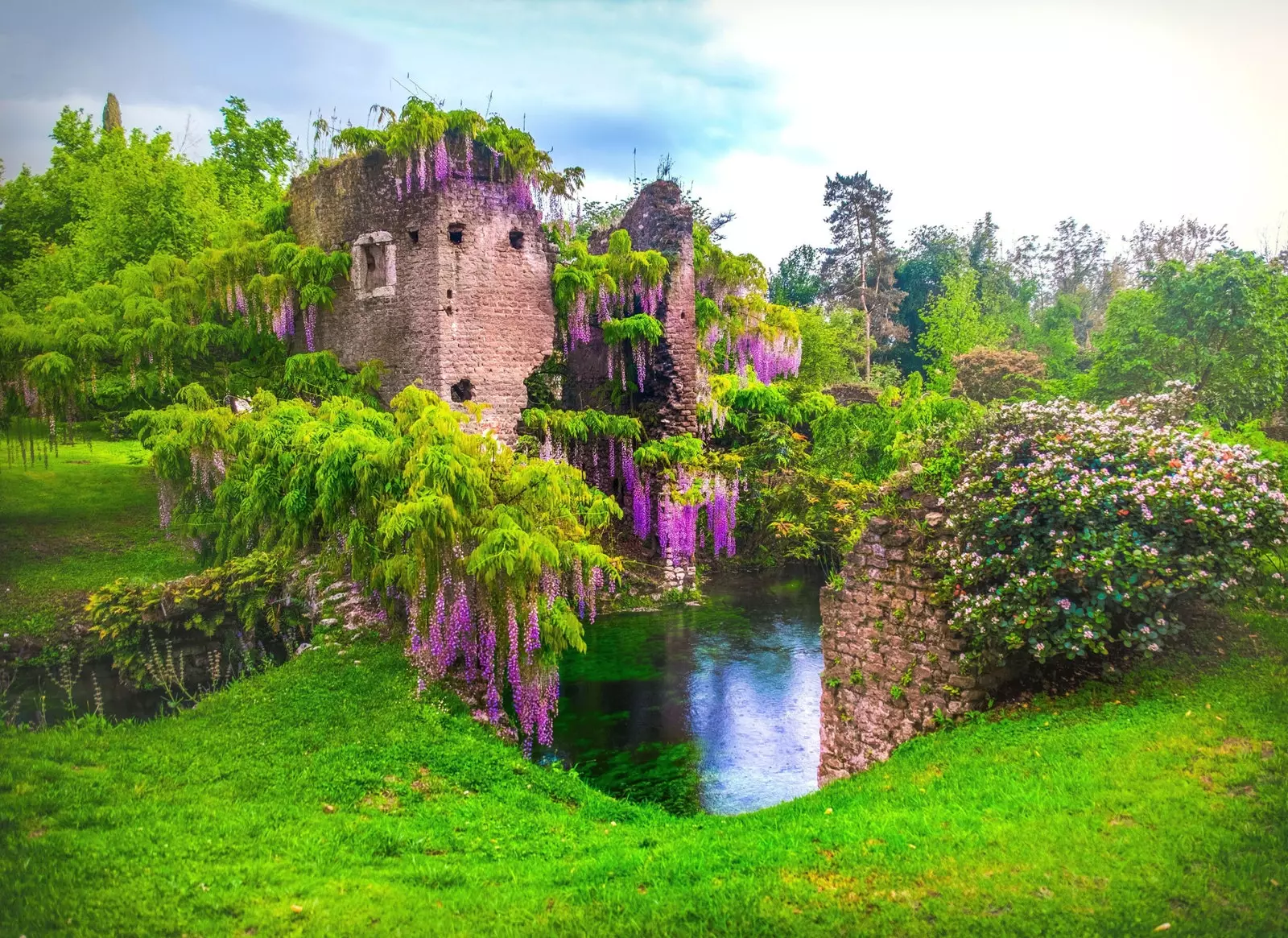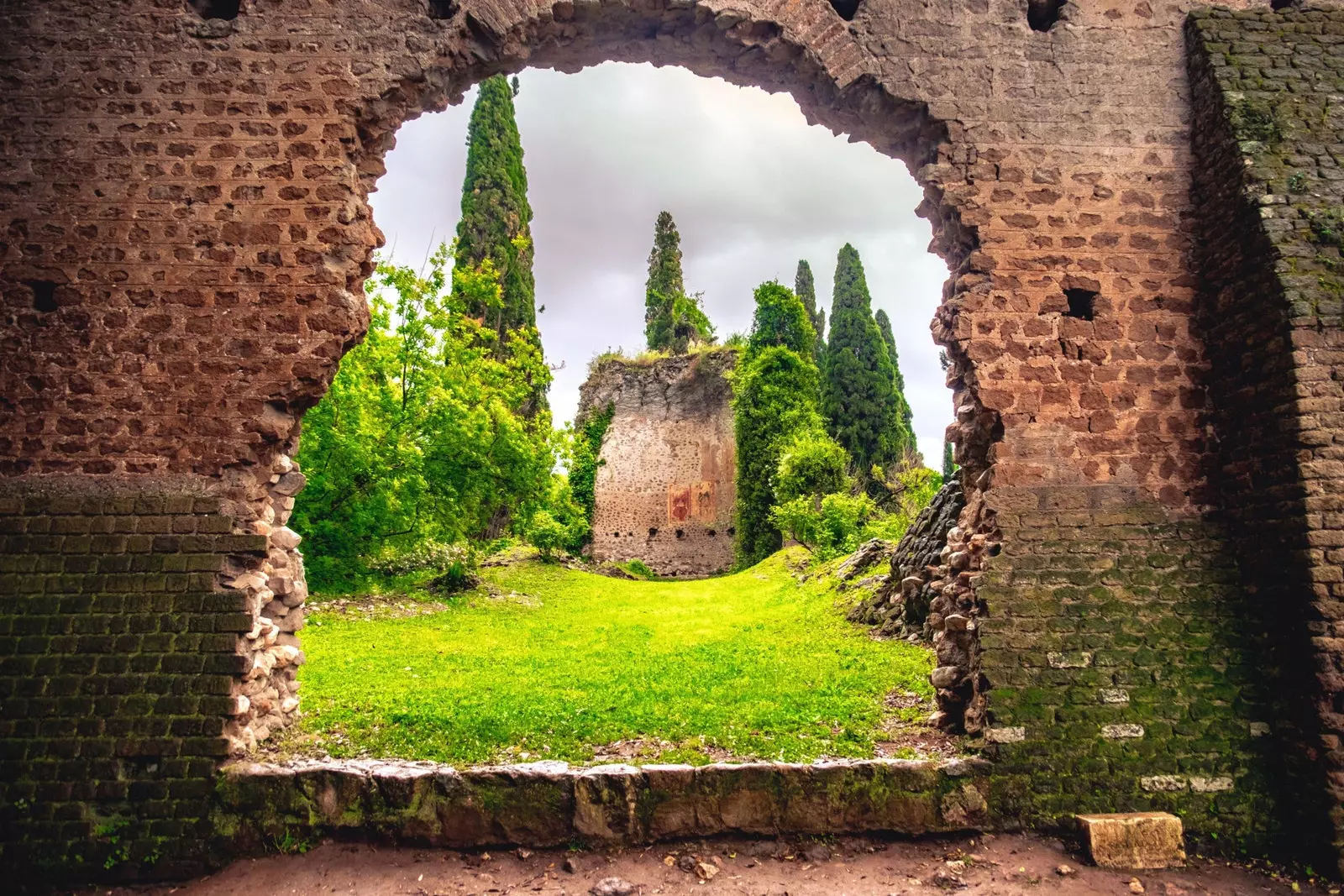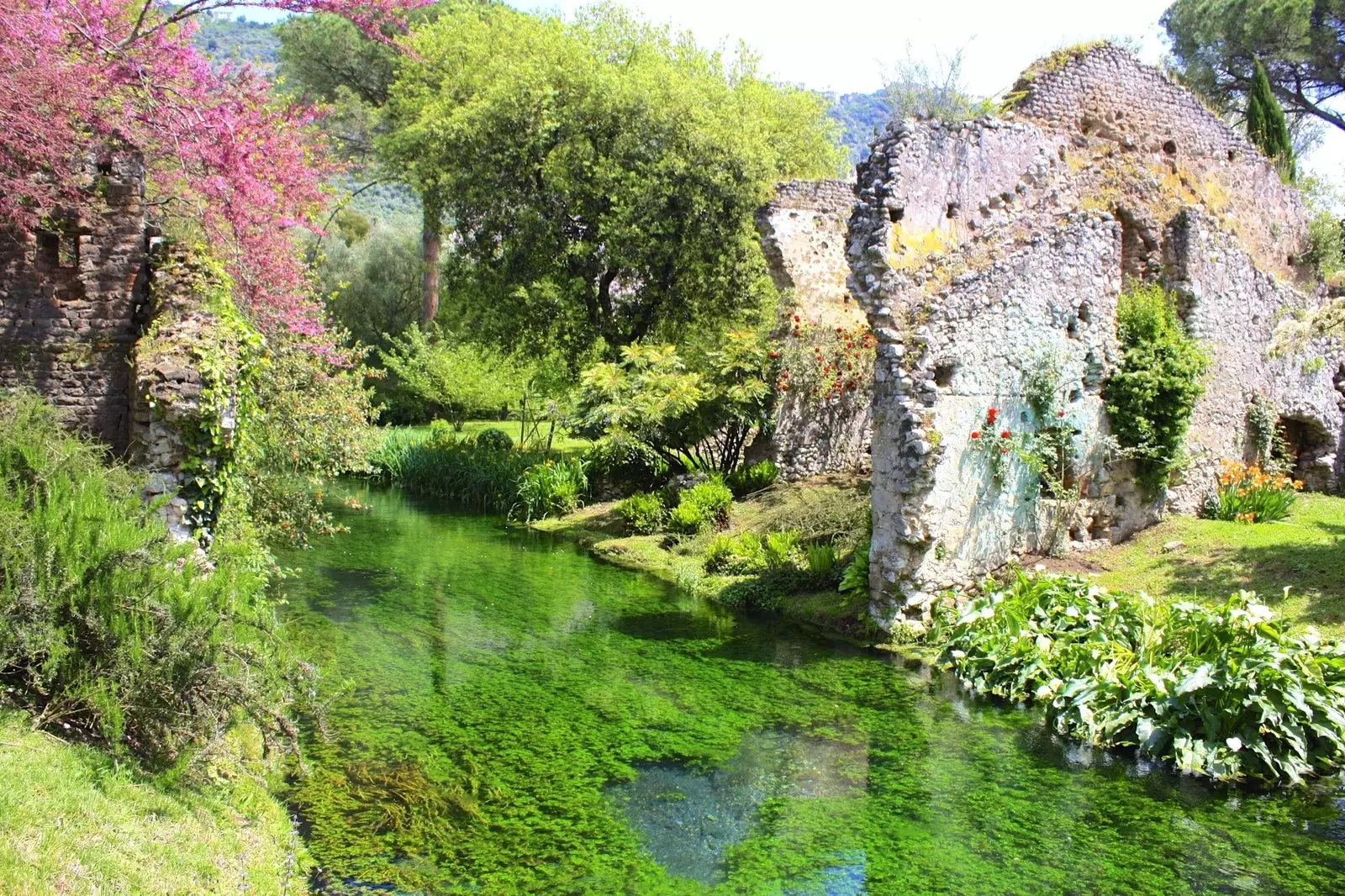
Is the Garden of Ninfa the most beautiful in the world?
A little more than seventy kilometers from Rome, between Cisterna de Latina and the ancient Latin city of Norba –its exiles, threatened by the Romans, erred in founding the current Cáceres (Norba Caesarina) on the Iberian Peninsula–, is the Garden of Ninfa, a unique place, an explosion of light and color with profuse vegetation and an important amalgam of medieval remnants that coexist in perfect harmony and pleasant symbiosis. a decorated rich in chromaticism, orphaned, virgin still of sin and lust, What would Bosch say?
The garden, defined by The New York Times as the most beautiful in the world, was created in the early years of the 20th century thanks to the sensitivity of Caetani family, who wanted to combine the modern orchard with Ninfa, an ancient walled medieval city, rich in churches, with more than 250 houses and located between mountains, sea and lagoons. With malaria and illustrious Barons.
MIDDLE AGES
Immersed in a fertile and strategic territory, the city was the scene of contention for many Barons linked to the Papacy. And it is that Ninfa was part of a large territory called Campagna e Marittima, which in the 8th century became part of the pontifical administration. Three centuries later, it acquired the rank of city and was governed by important noble families related to a Papal State, which chose precisely one of its seven churches –Santa Maria Maggiore– to crown Alessandro III as Pope after his decision to take refuge there in the face of the continuous attacks on Rome by Federico Barbarrosa.
It was specifically in the year 1292 when Pietro II Caetani, a relative of Benedetto Caetani (Pope Boniface VIII), acquired Ninfa and some bordering territories, starting a dynasty that would last seven centuries, and that endured malaria and looting, blood and major destruction for controversies related to the Western schism.
It is worth mentioning that of 1381, which meant precisely the end of the village and the beginning of a soulless ghost town, a rugged wasteland with amputated history and stale smell subject to any time spent with the Caetani, who eventually moved to Rome.
Gone is the past, only the centuries-old stones, the traces of a mill and a mini weaving and iron industry, but above all the remains of the churches, which proclaimed their final demise in the Renaissance period. From there began a gloom that lasted several centuries. Specifically until 1920.

Ruins of a church in the Garden of Ninfa.
SENSITIVITY AND SPONTANEITY
Santa Maria Maggiore, San Giovanni, San Biagio, San Salvatore, San Paolo and San Pietro fuori le Mura, where mass was celebrated until the 16th century, were adorned just a century ago, when the woman of Onorato Caetani (Ada Bootle Wilbraham) devised and put into practice a garden together with her sons Gelasio and Roffredo. It was a freestyle, spontaneous and sensitive, without a set geometry. Free of ties or rigid schemes and interference in accordance with the records of the time. **Only the drive of instinct and the senses. **
They began by remediating an infected place by restructuring the walls, the churches, some houses, the castle and the castle and planting the first cypresses, oaks and beeches. Also, taking advantage of a stream of water, they created a grid that keeps the garden alive and unites today. And it is that it enters, crystalline, running in a torrent with some small and large jumps, covered with iris flower.
Bamboo, wisteria and important conifers grow around the water. Around it, everything comes alive with an imposing flourish based on Californian poppies, Colombian aquilegias, euphorbias, hypericum, magnolias and sage. There is no shortage of new species of roses and shrubs in the Italian Eden, which once served as inspiration for intellectuals of the time such as Pier Paolo Pasolini, Alberto Moravia, Italo Calvino or Truman Capote. They frequented the place.
Today the garden is, at the same time, a poetry and a great painting where love is mixed with a chromatism of colors traced with the soul, with the senses and the deepest and most genuine emotions. There is light, water, color and infinite fauna. There is past and present. Memories and semblances. Style and sweet parsimony, apocopada. There is an organized mess churches that resist and a flora that asks for the time. There is complicity on the canvas. There is a drop that represents an ocean. It could be the Aleph of Borges or the new Garden of delights Bosch… Without sin, without lust.

A current of water keeps the garden alive today.
Address: Via Provinciale Ninfina 68, 04012 Cisterna di Latina (LT) See map
Schedule: From March to June: 9:00 a.m. to 6:00 p.m. / From July to September: 9:00 a.m. to 6:30 p.m. / From October to November: 9:00 a.m. to 3:30 p.m.
Half price: €15 / children free up to 12 years old.
